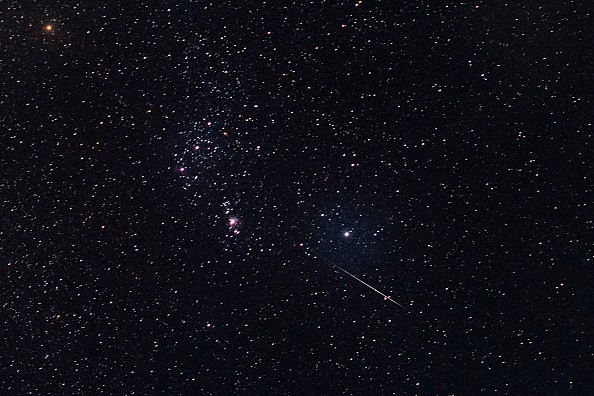Suppose you missed the peak of the South Taurid meteor shower last week. In that case, the North Taurid meteor shower will be visible in portions of central and southern Utah this Thursday and Friday, maybe generating a few of its distinctive fireballs.
Taurid Meteor Shower
From September through December, the Taurids deliver regular torrents of water. According to EarthSky, the peaks aren't as exciting or distinct as other meteor showers, such as the Perseids in August. The Taurids, on the other hand, are famed for their fireballs, which are meteors that glow brighter than Venus, the brightest object in the sky.
North Taurid meteor showers have a comparatively moderate rate of roughly five visible meteors per hour.
The streams in the sky for the North and South Taurids are slightly different, but both appear to come from the head of the constellation Taurus the Bull, after which the showers are called. According to EarthSky, debris from Comet 2P/Encke causes both North and South Taurid showers.
The North Taurids are visible in the Northern Hemisphere and are best seen between midnight and morning.
Do Not Use Telescope

It would help if you didn't use a telescope since it would restrict your view of the sky. The finest device for tracking these shooting stars is the naked eye. The meteor shower will be irregular, so bring a lawn chair and prepare to spend some time outside.
Try to pick a position with less light pollution for the greatest view. This year, the moon will be roughly half full during the height of the North Taurids, which isn't as ideal as a new moon (when the sky is darker), but you could still be able to see the meteors.
Residents of North America and Hawaii will be able to see a partial lunar eclipse on November 19 between 1 a.m. and 2 a.m. 7:06 a.m. ET, According to The Old Farmer's Almanac, it's 2:00 a.m. ET.
On December 4, a total solar eclipse will be seen from the southern hemisphere. The highest chances of spotting it are from the Falkland Islands, the southern tip of Africa, Antarctica, and southeastern Australia.
Meteor Showers

A meteor shower is a celestial occurrence in which many meteors are seen radiating from a single location in the night sky. Streams of cosmic debris known as meteoroids approach Earth's atmosphere at extremely high speeds and on parallel courses, causing these meteors. Because most meteors are tiny than a grain of sand, they disintegrate practically instantly and never reach the Earth's surface.
Because the meteor shower particles are all going in the same direction and at the same speed, they will appear to radiate from a single point in the sky to a viewer below. The phenomenon of perspective causes this radiant point, which is analogous to parallel train lines merging at a single vanishing point on the horizon. Meteor showers are nearly typically called after the constellation that the meteors appear to come from.
For more Space news, don't forget to follow Nature World News!
© 2025 NatureWorldNews.com All rights reserved. Do not reproduce without permission.





